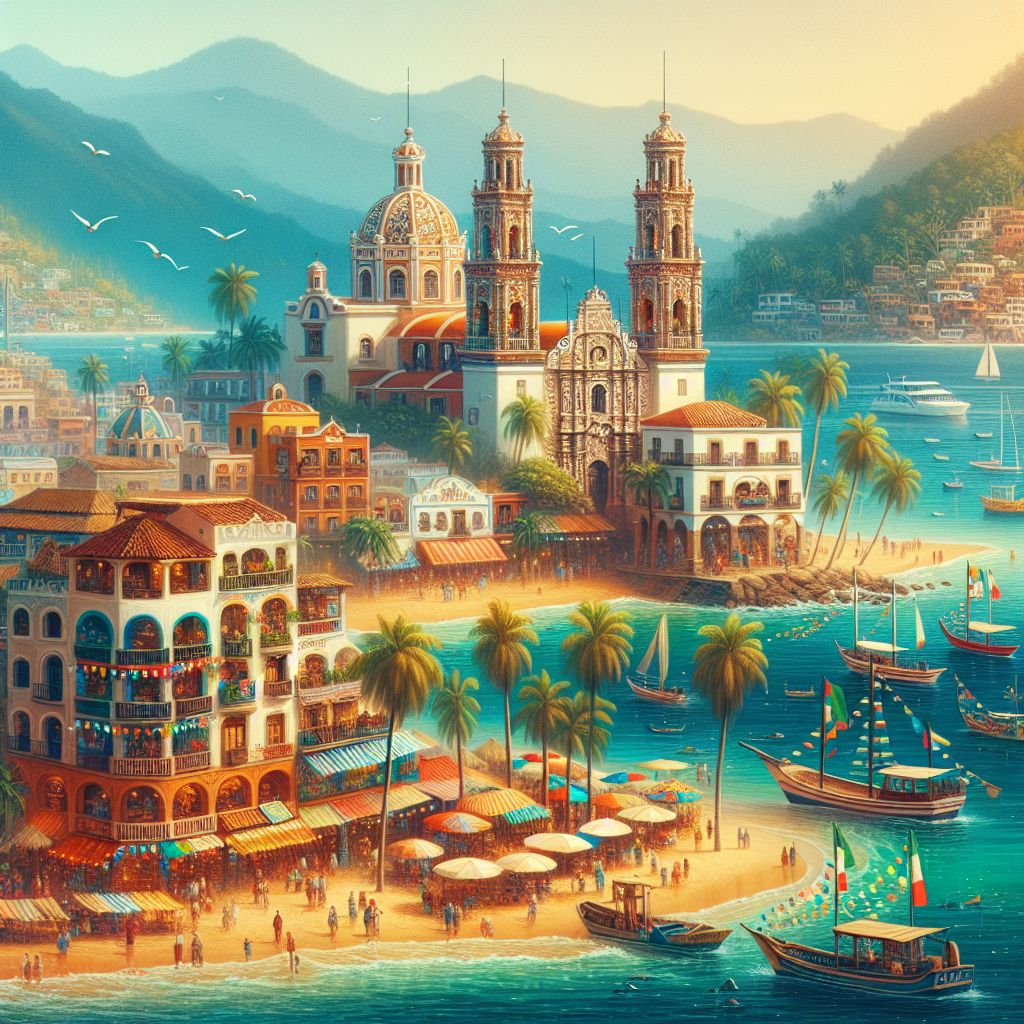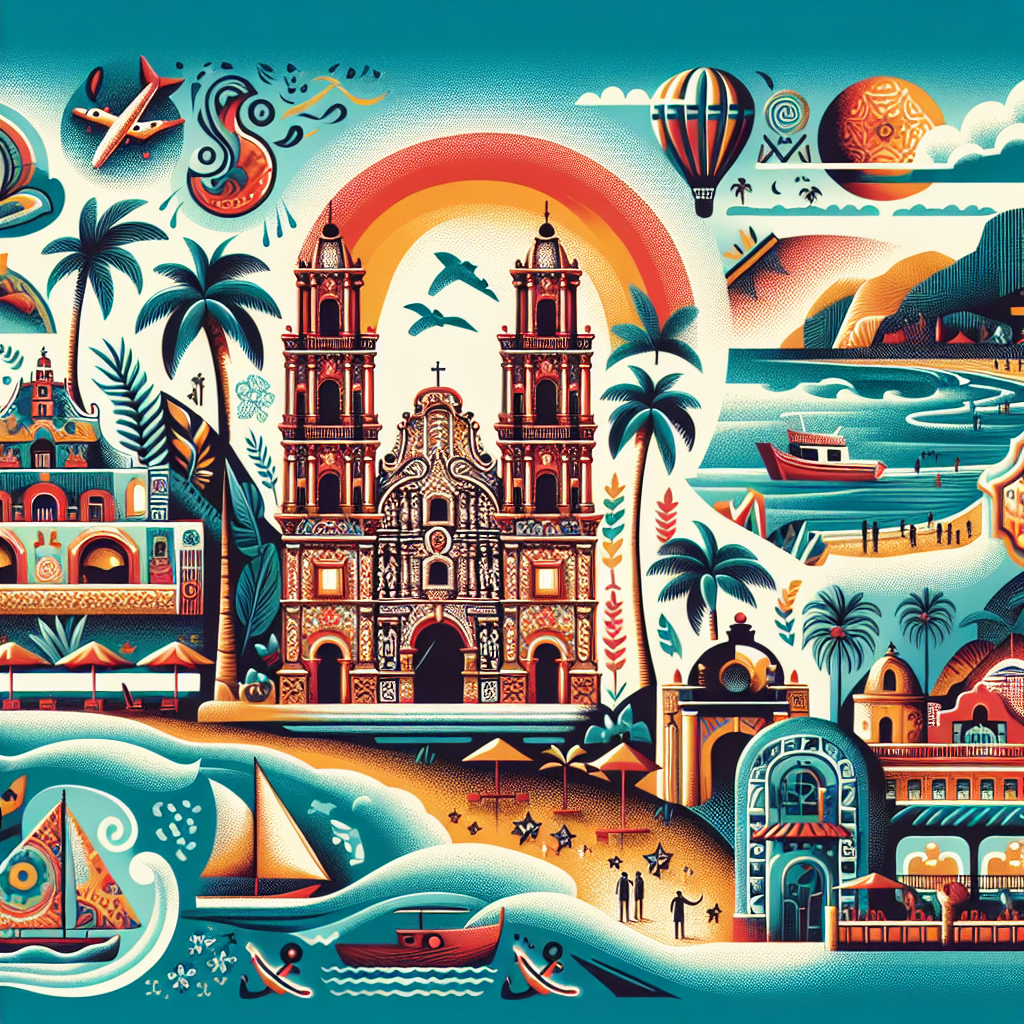Imagine strolling along the pristine white sandy beaches, with the crystal-clear turquoise waters gently lapping at your feet, as the warm sun embraces your skin. Mexico’s famous beach towns have become synonymous with idyllic vacations, offering a blend of natural beauty, rich cultural heritage, and vibrant nightlife. From the bustling streets of Cancun to the laid-back charm of Tulum, these beach towns have a fascinating history that has shaped them into the vibrant destinations they are today. Join us as we embark on a journey through time, exploring the captivating history of Mexico’s most famous beach towns.
1. Acapulco
Acapulco is a coastal city located in the heart of Mexico’s Guerrero state. This vibrant beach town has a rich history that dates back to ancient times.
1.1 Early History
Acapulco’s early history can be traced back to the Olmec civilization, who inhabited the region over 2,500 years ago. They were followed by the Nahuas, who established a settlement called “Acapulco” in the 12th century. This name translates to “place of the big canes,” referring to the abundance of sugar cane in the area.
1.2 Hollywood Glamour
In the 1950s and 1960s, Acapulco became synonymous with Hollywood glamour and international jet-setting. Celebrities like Frank Sinatra, Elvis Presley, and Elizabeth Taylor flocked to Acapulco’s pristine beaches and luxury resorts. The city’s vibrant nightlife and stunning natural beauty made it a must-visit destination for the rich and famous.
1.3 Decline and Resurgence
In the 1980s and 1990s, Acapulco experienced a decline in tourism due to safety concerns. However, in recent years, the city has undergone a resurgence. Efforts to improve security and promote Acapulco as a safe tourist destination have been successful, attracting visitors back to its beautiful beaches and vibrant culture.
2. Cancun
Located in the eastern part of the Yucatan Peninsula, Cancun is one of Mexico’s most famous beach towns. Its history is closely tied to the ancient Maya civilization.
2.1 Ancient Mayan Connection
Cancun was once a small fishing village that served as a significant Maya trading post. The name “Cancun” means “nest of snakes” in the Mayan language, reflecting the region’s deep cultural roots.
2.2 Development as a Tourism Hub
In the 1970s, the Mexican government recognized Cancun’s tourism potential and transformed it into a world-class tourist destination. Luxury hotels, resorts, and entertainment venues were built to accommodate the influx of visitors. Cancun quickly became renowned for its pristine white sandy beaches, turquoise Caribbean Sea, and ancient ruins like Tulum and Chichen Itza.
2.3 Economic Impact
Today, Cancun is a thriving tourism hub that contributes significantly to Mexico’s economy. The city’s hotels, restaurants, and attractions provide employment opportunities for thousands of locals, and the revenue generated from tourism helps fund infrastructure development and local initiatives.

3. Puerto Vallarta
Puerto Vallarta, nestled along the Pacific Coast of Mexico, has a captivating history that combines indigenous roots with a touch of Hollywood glamour.
3.1 Foundation and Early Years
Puerto Vallarta was founded in the 19th century as a small fishing village by Spanish settlers. Rugged mountains, lush tropical forests, and pristine beaches surround the town, creating a picturesque setting for its early inhabitants.
3.2 Hollywood Stardom and the Love Affair
In the 1960s, Puerto Vallarta gained international fame after being featured in the film “The Night of the Iguana.” This movie’s production brought Hollywood celebrities like Richard Burton and Elizabeth Taylor to the town, creating a love affair with Puerto Vallarta that continues to this day.
3.3 Embracing Tourism and Modernization
With the influx of Hollywood attention, Puerto Vallarta quickly embraced tourism and modernization. Hotels, resorts, and other tourist infrastructure were developed to meet the growing demand. Despite these changes, Puerto Vallarta has managed to maintain its unique charm, combining traditional Mexican architecture and a warm, welcoming atmosphere.
4. Playa del Carmen
What was once a small fishing village is now a thriving tourist hotspot in the Riviera Maya. Playa del Carmen’s evolution from a humble settlement to a cosmopolitan destination is an intriguing tale.
4.1 Fishing Village to Tourist Hotspot
Playa del Carmen started as a modest fishing village in the early 20th century. Its idyllic setting and proximity to spectacular natural wonders caught the attention of adventurous travelers seeking a more laid-back alternative to Cancun.
4.2 Growth and Development
Over the years, Playa del Carmen experienced rapid growth and development. The town’s charming streets became lined with boutique shops, cafes, and international restaurants. The construction of luxury resorts and the rise of a vibrant nightlife scene further fueled Playa del Carmen’s popularity.
4.3 Sustainability Efforts
As Playa del Carmen continues to attract tourists from around the world, the local community has placed a strong emphasis on sustainable tourism practices. Efforts are being made to protect the region’s delicate ecosystems, promote local culture and support community-driven initiatives.

5. Tulum
Tulum, located on the Caribbean coast of the Yucatan Peninsula, is famous for its ancient Mayan ruins and breathtaking natural beauty. This beach town is synonymous with tranquility and preservation.
5.1 Ancient Mayan Origins
Tulum was originally an important Mayan seaport during the Postclassic period (1200-1521 AD). The ancient ruins that overlook the turquoise Caribbean Sea are a testament to the town’s rich Mayan history.
5.2 Discovering Tulum’s Natural Beauty
In recent decades, Tulum has captured the attention of travelers with its pristine beaches, crystal-clear cenotes, and lush jungles. The town’s eco-friendly resorts and yoga retreats offer a unique opportunity to connect with nature and find inner peace.
5.3 Balancing Preservation and Tourism
With Tulum’s increasing popularity, there has been a growing concern about balancing tourism with the preservation of its natural and cultural heritage. Sustainable development practices, including regulations on construction and waste management, are being implemented to protect the town’s delicate ecosystems for future generations to enjoy.
6. Mazatlán
As the oldest resort city in Mexico, Mazatlán has a fascinating history influenced by European settlers and a modern culture that celebrates its rich heritage.
6.1 The Oldest Resort City in Mexico
Founded in the 16th century, Mazatlán quickly became a popular destination for Spanish colonizers to enjoy its beautiful beaches and warm climate. Its strategic location along the Pacific trade routes contributed to its growth and prosperity.
6.2 Influence of European Settlers
In the 19th century, German and Filipino immigrants settled in Mazatlán, bringing with them their unique cultures and traditions. This fusion of European and Filipino influences can still be seen in Mazatlán’s architecture, cuisine, and vibrant festivals.
6.3 Modern Mazatlán
Today, Mazatlán is a vibrant city that offers a mix of historical charm and modern amenities. Its long stretches of sandy beaches, lively downtown area, and vibrant arts scene make it a popular destination for both Mexican and international tourists.
7. Cozumel
Cozumel, an island located off the eastern coast of the Yucatan Peninsula, has a captivating history that dates back to pre-Columbian times.
7.1 Pre-Columbian History
Before the arrival of the Spanish conquistadors, Cozumel was a sacred island dedicated to the Mayan goddess of fertility, Ixchel. It was an important pilgrimage site, and Mayan women would travel there to seek blessings and guidance.
7.2 European Encounters
Cozumel became a significant point of contact between the Mayans and European explorers. In 1518, Spanish conquistador Juan de Grijalva arrived on the island, marking the beginning of European influence.
7.3 Cozumel as a Cruise Ship Destination
In recent years, Cozumel has become a popular cruise ship destination, attracting millions of visitors every year. Its stunning coral reefs and crystal-clear waters make it a prime location for snorkeling and diving enthusiasts.
8. Cabo San Lucas
Cabo San Lucas, located at the southern tip of the Baja California Peninsula, is a paradise where the desert meets the sea. This beach town has a fascinating history intertwined with pirate legends and hidden treasures.
8.1 Early Inhabitants
Cabo San Lucas has a rich indigenous history, with evidence of human presence dating back thousands of years. The region’s unique geography attracted indigenous tribes who thrived in the desert oasis.
8.2 Pirate Legends and Hidden Treasures
During the 16th and 17th centuries, Cabo San Lucas was a haven for pirates who sought refuge in its secluded coves and bays. Legends of hidden treasures buried along its shores further added to its allure.
8.3 Luxury Tourism Boom
In the 20th century, Cabo San Lucas began to transform into a luxury tourism destination. The construction of high-end resorts, championship golf courses, and world-class marinas attracted affluent travelers seeking a combination of natural beauty and modern amenities.
9. Puerto Escondido
Nestled along the Pacific coast of Oaxaca, Puerto Escondido is a hidden gem known for its world-class surf breaks and laid-back atmosphere. The beach town’s history is deeply rooted in its indigenous heritage and love for the ocean.
9.1 Indigenous Roots
The area surrounding Puerto Escondido has been inhabited by indigenous communities for centuries. The Mixtec and Zapotec cultures have a strong presence in the region, shaping its traditions and way of life.
9.2 Surfing Paradise
In the 1960s, word spread about Puerto Escondido’s powerful and consistent waves, attracting adventurous surfers from around the world. Today, it is considered one of the best surf destinations in Mexico.
9.3 Ecotourism and Community Efforts
While surfing remains a major draw for visitors, Puerto Escondido is also committed to ecotourism and community initiatives. Efforts to protect endangered sea turtle habitats, promote sustainable fishing practices, and support local artisans contribute to the town’s vibrant and environmentally conscious culture.
10. Huatulco
Huatulco, located on the Pacific coast of Oaxaca, is a hidden paradise with a unique blend of natural beauty and carefully planned development.
10.1 Pre-Hispanic Settlements
Huatulco’s history goes back thousands of years, with evidence of pre-Hispanic settlements dating back to the Zapotec civilization. The region’s lush landscapes and pristine beaches served as a backdrop for ancient civilizations thriving in harmony with nature.
10.2 Planned Development and Sustainability
In the 1980s, the Mexican government set out to transform Huatulco into a sustainable tourist destination. Through careful planning, the region’s natural ecosystems were preserved, and environmentally friendly practices were implemented. Huatulco now boasts beautiful beaches, protected nature reserves, and low-impact tourism infrastructure.
10.3 Growing Tourism Sector
Huatulco’s commitment to sustainable development, coupled with its stunning beaches and diverse marine life, has attracted a growing number of tourists in recent years. The town’s inclusive community initiatives and support for local businesses ensure that the benefits of tourism are shared with the local population, creating a socially and economically vibrant destination.
In conclusion, Mexico’s most famous beach towns are not only picturesque holiday destinations but also living testaments to the rich history and diverse cultural heritage of the country. Whether you’re exploring the ancient ruins of Tulum, enjoying the glamorous allure of Acapulco, or seeking a surfers’ paradise in Puerto Escondido, each beach town offers a unique experience that combines history, natural beauty, and warm hospitality. So pack your bags, embrace the friendly atmosphere, and embark on an unforgettable beach adventure in Mexico’s coastal treasures.
